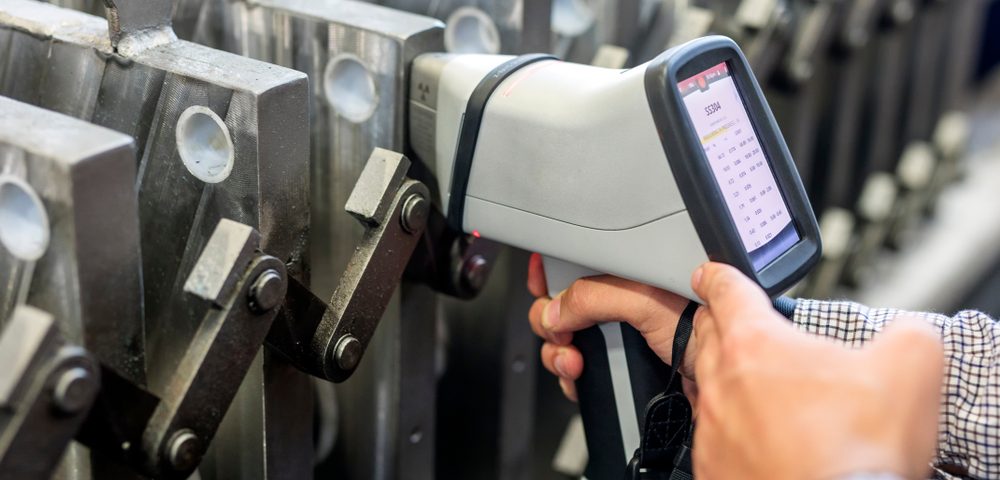Factors in Choosing Utah Stainless Steel Grade

Broad Variables Impacting Steel and Metal Prices
December 3, 2021
Basics on the Spark Test for Steel and Other Metals
January 7, 2022Stainless steel is an enormously beneficial product, one used for a variety of applications and needs. Known for everything from corrosion resistance to its fantastic aesthetics, stainless steel is one of the most popular metals in the entire world for industrial applications — but it has a number of grades, and knowing which to choose is very important.
At Wasatch Steel, we’re happy to provide clients with a huge range of steel products, from steel sheet to steel pipe, steel bar and more for clients around Utah. What are the different grades of stainless steel out there, and what are the factors you should be considering while choosing the right one for your needs? Here’s a primer.
Stainless Steel Grades
While this list isn’t exhaustive, here are some of the most common stainless steel alloys and grades that are used in various applications:
- Austenitic: Responsible for about 70% of the stainless steel production on the planet, this is the most popular and versatile grade of stainless steel. It features fantastic corrosion resistance in a wide variety of chemical environments, and is commonly used for food-processing equipment and surrounding areas. It comes in numerous grades, from the 200 series to grades 303, 304, 304L, 316, 316L and more.
- Martensitic: Sometimes called “high-carbon” stainless steel, this alloy is harder and more brittle than other grades. It’s less commonly used in industrial applications, but it has great strength and can be heat-treated for even better toughness. It’s often used in knife blades, surgical instruments and other precision applications. Common grades include 410 and 440C.
- Ferritic: Known for its corrosion resistance, this is a rather poor heat conductor, but it’s resistant to most acids and has good formability. It’s commonly used in containers such as tanks for processing food and chemicals, and can be highly polished to reflect light. It’s found in grades 410, 430 and more.
- Duplex: Duplex stainless steel alloys feature excellent resistance to corrosion and fatigue, as well as high strength and weldability. They’re often used in structural applications where a combination of strength and resistance is key, such as chemical processing, offshore drilling and more. Duplex grades include 2205 and 2507.
- Precipitation-hardened martensitic: For applications requiring extreme corrosion resistance, hardness and strength, precipitation-hardened martensitic stainless steel alloys are a great choice. Featuring properties similar to those of high-carbon steels, they can be heat-treated for even better toughness and resistance to wear and tear. They’re commonly used in oil and gas drilling, as well as in food processing and other harsh environments. Their common grades are 17-4 and 15-5.
Our next several sections will go over the important variables to evaluate as you’re choosing the proper stainless steel type and grade for your next project.
Corrosion Resistance
One of the single most important factors you’ll want to consider when choosing a stainless steel alloy is its corrosion resistance. The austenitic grades are the most resistant to corrosion, while the martensitic and ferritic grades are less so. If your application is in a highly corrosive environment, you’ll want to make sure to select an alloy with good corrosion resistance.
Some of the more common corrosive elements are acids, chlorine and certain salts. Acids include hydrochloric, sulfuric, nitric and phosphoric acid. Chlorine is often found in hot water tanks where it causes the release of hydrogen gas. Corrosion resistance can be affected by heat — so if you’re working with a stainless steel alloy that’s known to be resistant in room-temperature environments, it may not hold up so well when exposed to direct heat.
Formability and Weldability
Formability and weldability are two additional important factors for consideration as you choose a stainless steel alloy. The austenitic grades tend to be the easiest and most formable types — but they can also be the most expensive. The martensitic and ferritic grades are less formable, but they’re also less expensive.
Weldability is another important factor to consider, as it’s often necessary to weld stainless steel components together in order to create a finished product. Some of the more difficult-to-weld alloys include the martensitic and ferritic grades.
Operating Environment
Environment types may include low pH, stressors, widely changing temperatures, highly corrosive conditions and extremes in pH levels. Grades like 304 and 316 often have some of the best performance when it comes to corrosion and stress.
Strength and Ductility
Two particular alloy types are best-known for strength and ductility within stainless steel: Chromium and nickel. Chromium is known for its strength, with nickel adding to its durability and lowering the alloys’ melting point. When choosing stainless steel grades for their strength, you’ll normally want to stick to one of these two alloy combinations.
Weight
To determine your desired weight, it’s helpful to consider what you’re using the finished product for. For instance, if you’re building a material handling product, it will be useful to know how heavy the alloy needs to be in order for it to bear weight without damage.
Process Temperatures
One of the simplest methods many project managers use to identify the proper stainless steel grade for their needs is looking at maximum use temperature or melting point. In order to determine your maximum operating temperature, make sure you know the highest temperature your application will reach.
If a given stainless steel doesn’t meet the specifications you require, you can quickly strike it off the list and continue on.
There are many different grades, variants or “types” of stainless steel available to choose from for your specific needs. Each one varies in price, ease of fabrication/shaping/machining, corrosion resistance and so forth. For more assistance with choosing the right type and grade of stainless steel, or for any of our other steel products or services in Utah, speak to the staff at Wasatch Steel today.



